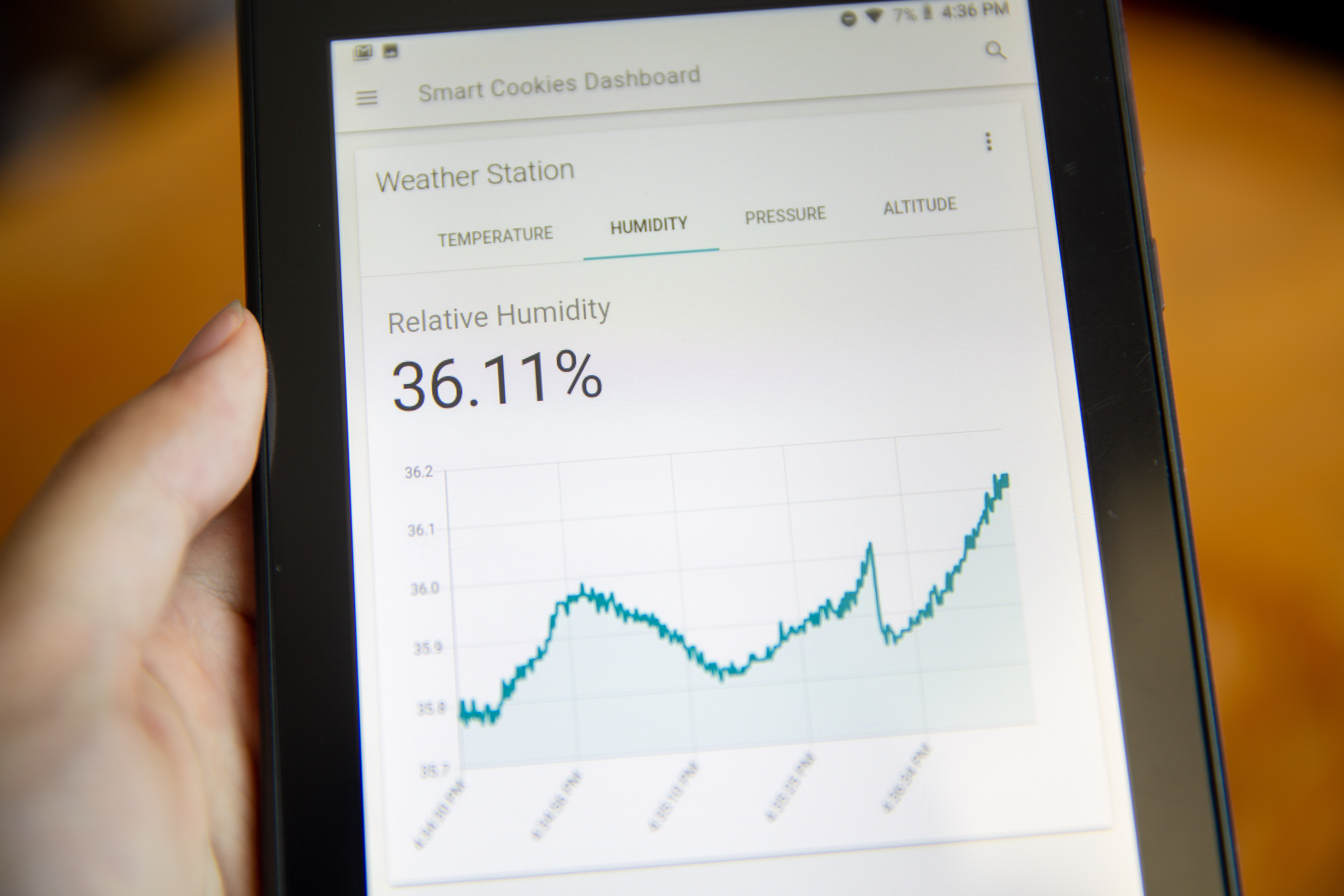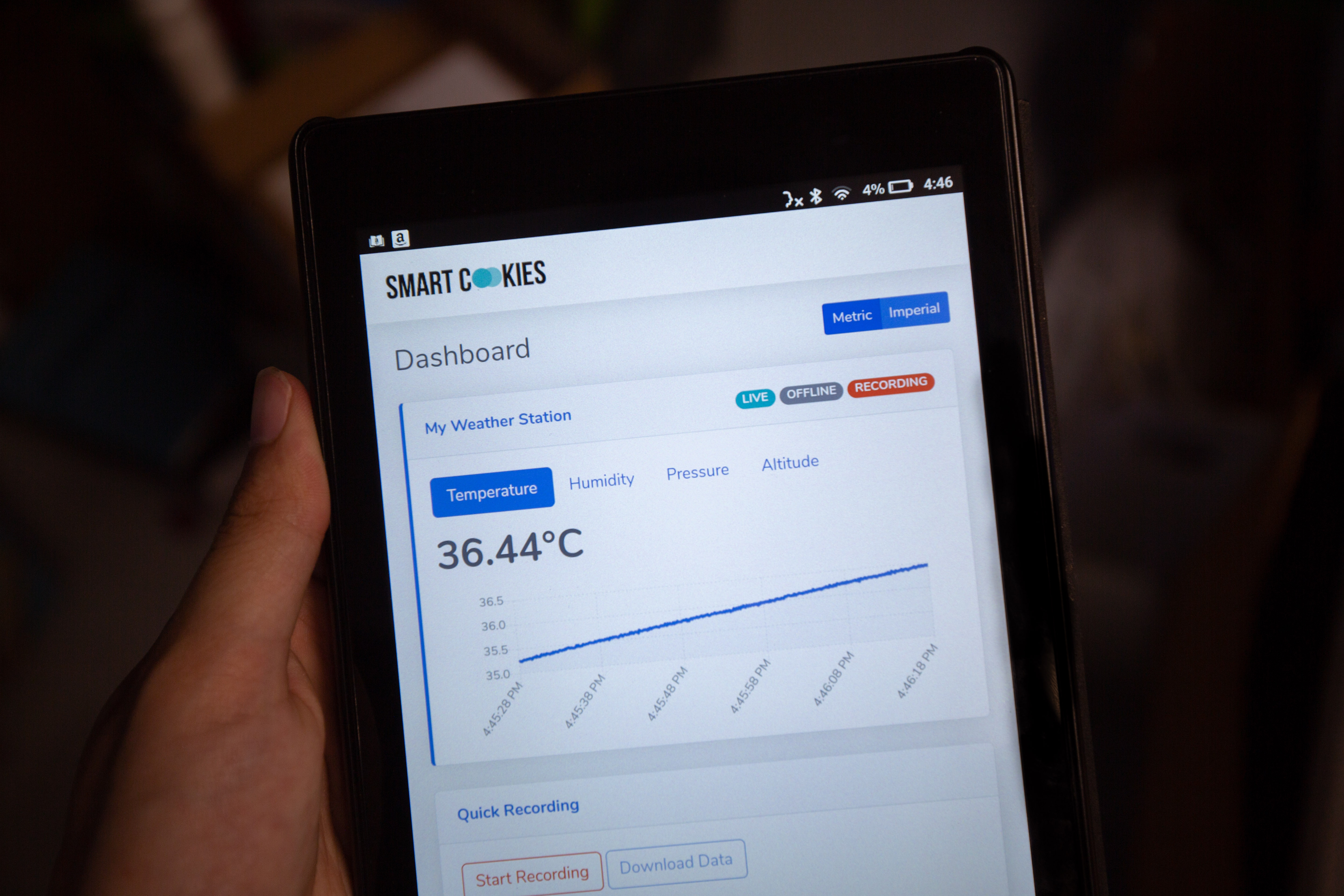INTERNET OF THINGS
Distributed Wireless Sensor Ecosystem
A distributed ad-hoc mesh sensor network to promote accessible STEM education and accelerate research
Overview
This sensor ecosystem is a highly integrated and decentralized mesh network of wireless sensor nodes capable of long-term datalogging and realtime telemetry visualization. I designed this sensor network with students in developing communities in mind; it is completely self-contained and self-working, requiring no programming, software downloads, or even Internet access to work..png)


Engineering
Hardware
Each Smart Cookie is comprised of an ESP8266 WiFi module, rechargeable LiPoly battery, and onboard sensor array. Current prototypes contains temperature and humidity sensors (Si7021 IC), although any low-power sensor chip with a digital I2C or SPI interface may be used. A recent addition to the newer prototypes is a power management controller IC for onboard charging of the battery.
Mesh Networking
While a single Smart Cookie can be used as a self-contained data collection tool, using multiple Smart Cookies in close proximity with each other automatically creates a decentralized mesh network that intelligently routes data packets through other Smart
Cookies to a root node that emits its own local hotspot. Connecting a tablet to the hotspot will allow users to visualize realtime telemetry from all Smart Cookies connected to the mesh network and send commands to each node. This allows
the system to accomodate a virtually limitless number of sensor nodes, enables hardware homogeneity, and extends the effective range of data collection far beyond the estimated 100m signal radius of a single WiFi module.
Embedded Web App
Students can visualize realtime data and interact with it through a lightweight web app that manages all the data streams and displays them on a user interface. This web app is stored withhin the microcontroller's internal filesystem (SPIFFS), and is served by the ESP8266 in access point (AP) mode. Current prototypes use the Bootstrap framework for front-end interface elements and Chart.js for realtime data visualization to achieve a responsive, clean, and functional user experience.